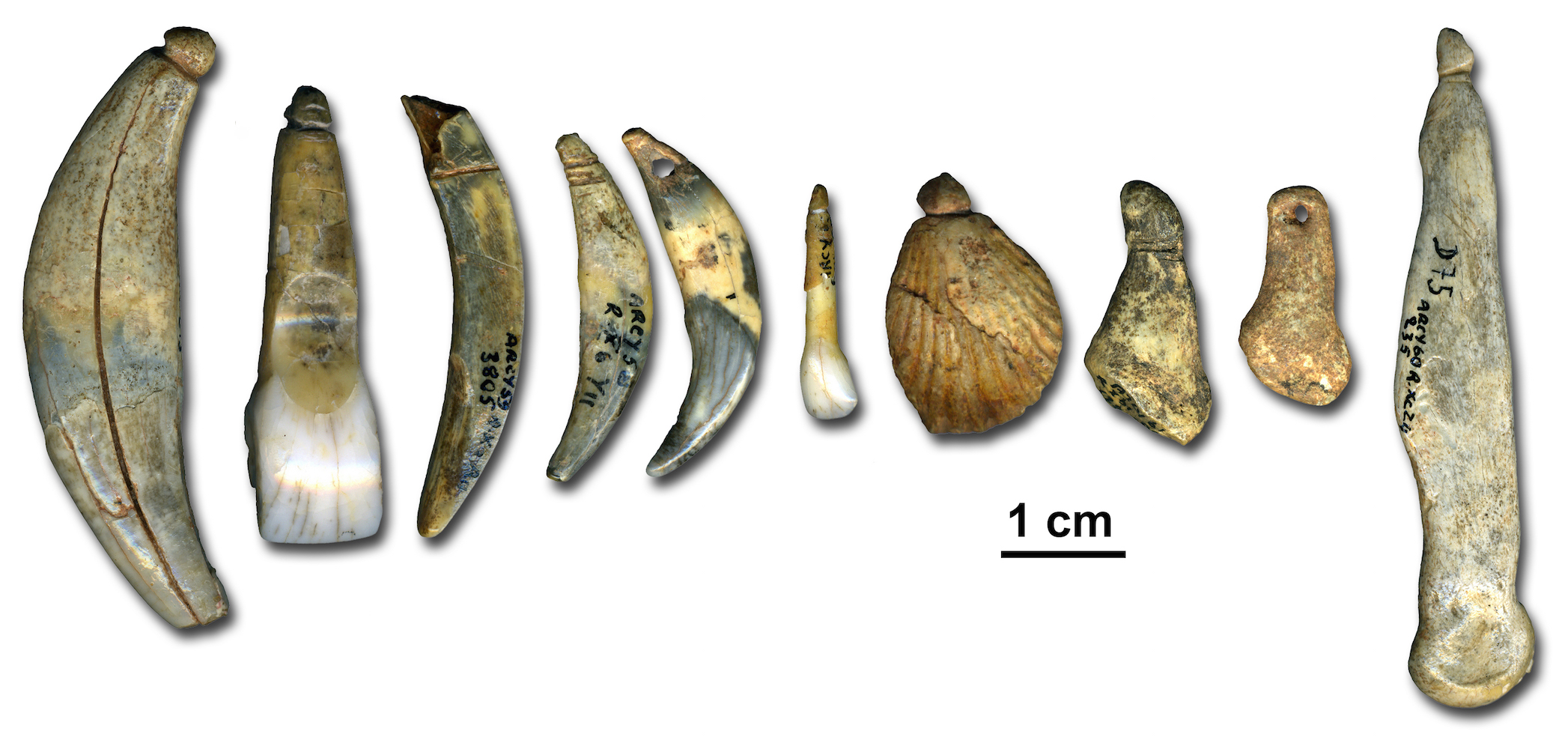Neanderthals Fashioned 'Jewelry' Out of Animal Teeth and Shells

About 42,000 years ago, the Neanderthals — the stocky cousins of modern humans — fashioned tiny jewelry beads from animal teeth, shells and ivory, a new study finds.
The finding is momentous, as it suggests that Neanderthals could engage in symbolic expression — the ability to make art — before they went extinct about 30,000 years ago, the researchers said.
"We now know that some of the last Neanderthals in Europe made artifacts that we do not see in Neanderthal material culture before that time," said Frido Welker, the study's lead researcher and a doctoral student of human evolution at the Max Planck Institute for Evolutionary Anthropology in Germany. [In Photos: Neanderthal Burials Uncovered]
The discovery is based on the artifacts and bony remains found in the Grotte du Renne cave in Arcy-sur-Cure, an area located about 125 miles (200 kilometers) southeast of Paris. After the cave was discovered in 1949, its contents were dated to about 40,000 to 50,000 years ago, a period during which modern humans were sweeping across Europe and displacing the Neanderthals, the researchers said.
At first, anthropologists credited the beads to the Neanderthals, but the prevailing view of Neanderthals was that they didn't have the brainpower to craft such items. That prompted many experts to wonder whether the excavation team had made a mistake in attributing the beads to Neanderthals, when perhaps modern humans had made the ornaments, according to Phys.org.
The researchers on the new study set out to answer that question once and for all.
"We wanted to know whether an archaeological culture called the Châtelperronian was made by Neanderthals or modern humans," Welker told Live Science in an email. "If they were modern humans, they would be some of the earliest modern humans on the European continent, and might have played a role in Neanderthal extinction."
Get the world’s most fascinating discoveries delivered straight to your inbox.
Protein investigation
The ancient bone fragments in the cave did not have enough preserved DNA for a thorough analysis, so the researchers turned to another identifying factor: proteins.
They used several mass-spectrometry techniques to study the proteins preserved in about 200 ancient bone specimens from the cave, Welker said. The mass-spectrometry methods were key to the experiment, he added. That's because proteins are made out of amino acids, which are joined together on a string.
Each amino acid has a different weight, or mass. "By using massspectrometry, we can establish the different sequences of amino acids in our sample and compare that with existing protein databases," Welker said.
They found that, although the majority of the bone fragments belonged to horses or aurochs (wild cattle), some were clearly hominin, a group consisting of modern and extinct human species, Welker said. Moreover, the researchers identified an amino-acid sequence that was unique to Neanderthals, proving that the bones did not belong to modern humans or the Denisovans, an extinct human relative, he said. [The 10 Biggest Mysteries of the First Humans]
Results from additional testing methods, such as direct radiocarbon dating and ancient mitochondrial DNA analysis, also hinted that the bones belonged to Neanderthals, he said.
"Very young infant"
One of the proteins found in the Neanderthal bones was a type of collagen found only in growing bones. In addition, the specimen had a high proportion of a certain kind of nitrogen isotope (a variation of an element, but with a different number of neutrons) that is associated with breast-fed infants.
"We identified ancient proteins in these Neanderthal bone specimens that indicated they belong to a very young infant, probably around the age of 1 year old," Welker said.
The baby likely lived around the same time when the Neanderthals crafted the 1.2- to 2.4-inch-long (3 to 6 centimeters) beads, the researchers said. However, they added that they "don't know if they [the beads] belong to a single 'necklace' or were worn in different ways, and they were found in different areas of the Grotte du Renne," Welker said.
"It is now up to the archaeologists to try and explain how this happened," Welker said. "Did they learn [bead making] from modern humans? We know they interacted, as there is genetic interbreeding between Neanderthals in modern humans in our DNA. Or maybe they imitated, or invented such artifacts themselves, independently?"
It's also possible that the Neanderthals got the beads from modern humans, possibly as a courtship gift, according to Phys.org.
The findings were published online Sept. 16 in the journal Proceedings of the National Academy of Sciences.
Original article on Live Science.

Laura is the archaeology and Life's Little Mysteries editor at Live Science. She also reports on general science, including paleontology. Her work has appeared in The New York Times, Scholastic, Popular Science and Spectrum, a site on autism research. She has won multiple awards from the Society of Professional Journalists and the Washington Newspaper Publishers Association for her reporting at a weekly newspaper near Seattle. Laura holds a bachelor's degree in English literature and psychology from Washington University in St. Louis and a master's degree in science writing from NYU.


